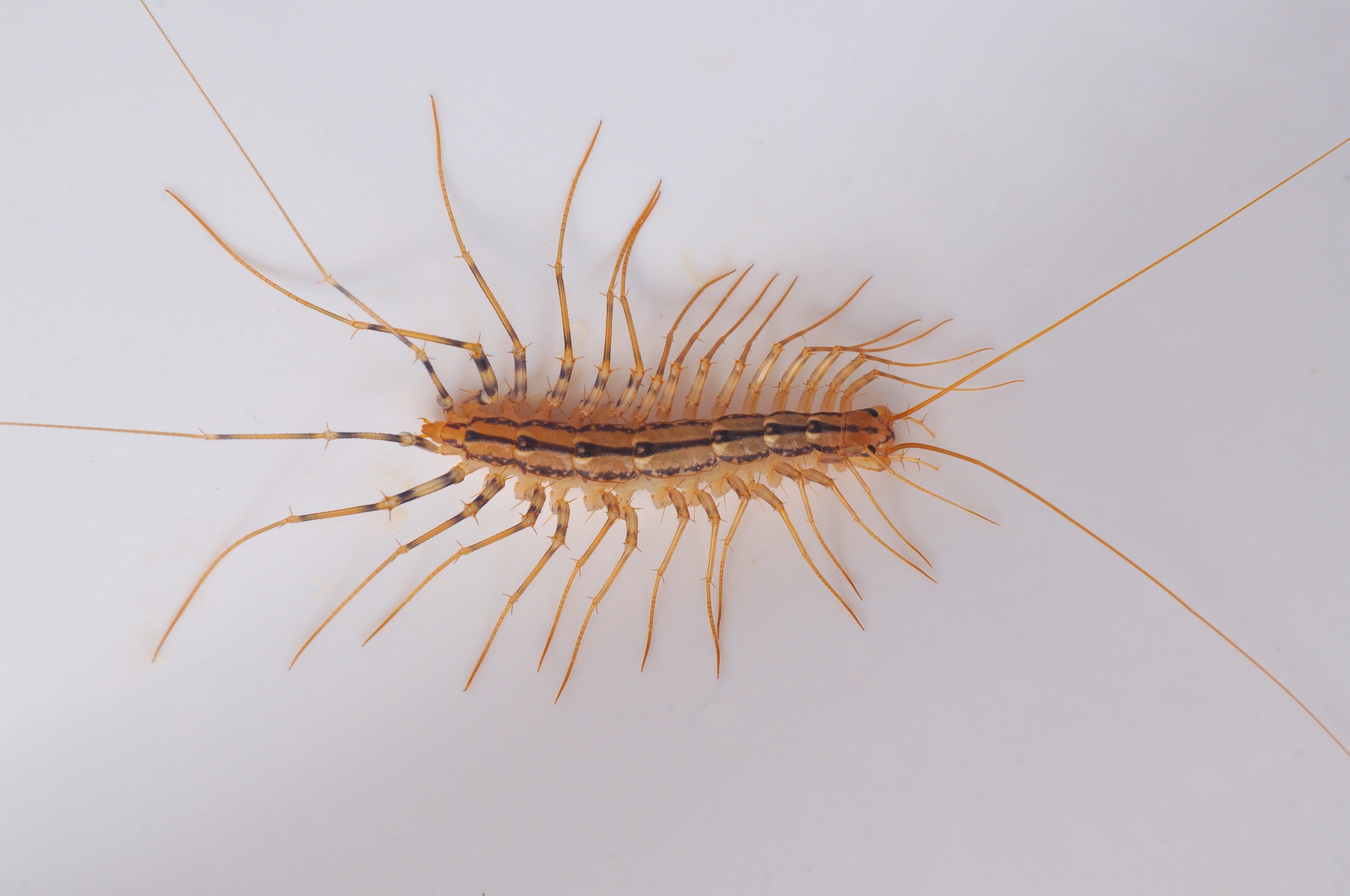Table Of Content

House centipedes (Scutigera coleoptrata) are distinguished from other centipedes by their longer legs. The longer legs affect the way the common insect moves, creating a sort of "rolling" motion that makes it looks like they have many more legs than they do. Reduction in the centipede food source is the first step in managing a house centipede population. Determine what other types of arthropods, in your house, are providing a meal for the centipedes by distributing 'sticky insect traps', also called monitors, around the house.
Should I kill house centipedes?
To keep house centipedes from entering your home, make sure your home is free from all pests. Standard prevention applies here as it can help you keep all insects and centipedes from getting inside. Make sure your home is sealed, so there are no cracks to let insects in. Keep food and drinks put away and clean up any spills as they occur, so there is no food for other insects. As long as you do not have insects inside your home, the house centipedes will not be in your home. Individuals with other insect allergies should observe their symptoms closely in the event of a centipede bite.
Can House Centipedes Bite Humans Get Rid of Centipedes
If you experience a severe reaction or have concerns about a bite, it is advisable to seek medical attention. However, such cases are relatively rare, and encounters with house centipedes are infrequent in most households. While house centipede venom is adapted for their predatory and defensive needs, it is not considered dangerous to humans. Bites from house centipedes are rare, and the venom typically causes only mild, localized symptoms, such as pain, redness, and swelling, similar to a bee or wasp sting.
How Aggressive Are Common Centipede Species?
Beyond the initial pain caused by an attack, possible side effects include severe swelling, chills, fever and weakness. In the event of a severe allergic reaction, emergency medical services should be contacted immediately. Still, house centipedes are basically harmless to humans, and they're effective predators of other insect nuisances, including roaches, flies, silverfish, and termites. So, if you can learn to not be terrified of them, you should let them do their thing.
The 5 Worst Bugs to Find in Your House (and 5 That Aren't So Bad) - Lifehacker
The 5 Worst Bugs to Find in Your House (and 5 That Aren't So Bad).
Posted: Wed, 04 May 2022 07:00:00 GMT [source]
House centipedes are considered nuisance pests and when they come into your yard, it is often because they are looking for food. If centipedes find food near your exterior walls, and there are open cracks or crevices, they can accidentally get inside your home. If you are dealing with house centipedes on your property, contact your local exterminators. House centipedes don’t harm or destroy stored products, fabrics, pets, humans, or the structural integrity of your building and are generally only considered a nuisance. All house centipedes are venomous, but they typically run away from humans, and they very rarely bite.
House centipedes won’t harm people or homes.
These crawlers can have anywhere from fifteen to nearly 200 legs (depending on the species and size). Some can get even longer – many centipedes in Hawaii grow to be eight inches long and almost half an inch wide. They can easily climb on floors, walls, and most other surfaces. Beyond this, every once in a while, an outdoor centipede might wander indoors. As we already mentioned, centipedes will only attack if they feel threatened. That means you would have to stumble upon one in a pretty literal sense of that word or find one and decide to harass it to get in trouble.
Maybe You Were Thinking About Eating Raw Centipedes. Don't. (Published 2018) - The New York Times
Maybe You Were Thinking About Eating Raw Centipedes. Don't. (Published .
Posted: Mon, 30 Jul 2018 07:00:00 GMT [source]
They are often found in homes, especially in damp areas like basements, bathrooms, and crawl spaces. While they can be startling due to their appearance and rapid movements, they are not venomous or harmful to humans. This venom is injected when they bite as a way to subdue their prey so they can eat it. The amount of venom used when a centipede bites is tiny, so it’s not likely to impact a human very much. The biggest worry with a bite, instead, is the pain of the bite, which will go away quickly.

Where Do House Centipedes Live?
ABC pest control exterminators have been helping people throughout the southern states with pest problems for generations. They can deal with your pest problem, no matter what its cause. They are greyish-blue in color—hence their name—and possess both pincers and venomous legs that can cut you. This is an example of a centipede whose “bite” feels more or less like a bee sting. For smaller insects like silverfish (here’s a guide on the difference) and termites, the venom is super potent.
Severe reactions are uncommon, and medical attention is usually not necessary unless there is an allergic response or complications arise. When a house centipede bites someone, they may experience localized pain and redness. The bite is similar to a sting from a bee, though many people report it is not as painful as a bee sting.
House centipedes are attracted to moisture and can be found outside under stones, boards, or sticks or beneath moist leaf litter and other organic matter. When found in homes, house centipedes most often occur in moist cellars, damp closets, and bathrooms, where they feed on insects and spiders. When disturbed, centipedes move quickly toward darkened hiding places. If house centipedes are abundant, there may be an underlying moisture problem in the home that should be corrected.
It’s a good idea to clean the area and apply some antibacterial ointments to prevent any issues. If your symptoms are severe or don’t improve within a few days, talk to your doctor. Pain, redness, and swelling begin immediately upon being bitten.
The most effective way to prevent a centipede infestation is to reduce areas of moisture in and around your home. Remove piles of leaves and grass clippings, logs, stones and rocks on your property. Provide adequate ventilation in basements, attics and crawl spaces.
If you disturb a centipede without realizing it, an attack might result. By using a highly-modified pair of legs called forcipules that work like pincers. Meanwhile, venomous insects will inject their poison into the bloodstream.
Their antennae are sensitive to both smells and tactile information. They use both their mandibles and their legs for holding prey. This way they can deal with several small insects at the same time. To capture prey they either jump onto it or use their legs in a technique described as "lassoing".

No comments:
Post a Comment